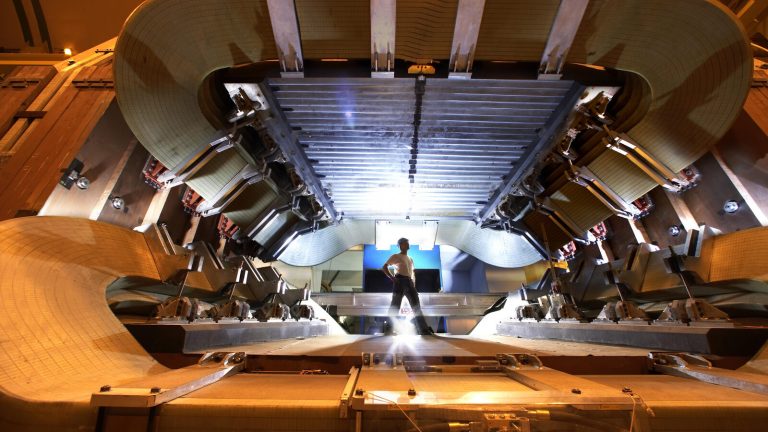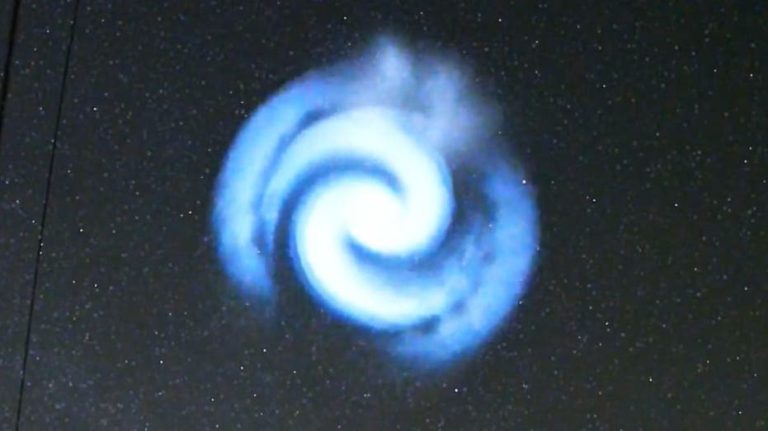
Saturn’s rings are falling in on the planet as icy rain, according to researchers.
Scientists say this is occurring due to the planet’s intense gravity.
Dr. James O’Donoghue, from the Japan Aerospace Exploration Agency, is going to track the destruction of the rings, according to a University of Reading release.
He will use some of the world’s most powerful telescopes to do so, including the James Webb Space Telescope and Hawaii’s Keck Telescope.
ASTRONOMERS SEE ANCIENT SUN-LIKE STAR DEVOURING PLANET FOR THE FIRST TIME – AND POSSIBLY EARTH’S FATE
“We’re still trying to figure out exactly how fast they are eroding,” he said in a statement. “Currently, research suggests the rings will only be part of Saturn for another few hundred million years. This may sound like a long time, but in the history of the universe this is a relatively quick death. We could be very lucky to be around at a time when the rings exist.”
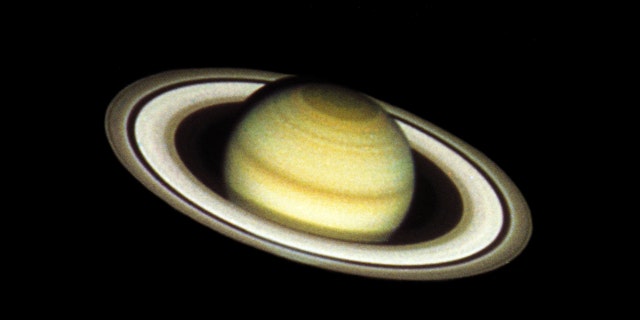
An image of Saturn from the Hubble Space Telescope reveals unprecedented detail in atmospheric features at the northern polar hood, a region not extensively imaged by the Voyager space probes. (Photo by: HUM Images/Universal Images Group via Getty Images)
The work will start in December 2023 at the university’s Department of Meteorology. O’Donoghue, who has previously worked for NASA, also plans to examine why the upper atmospheres of Jupiter and Saturn are so hot when they are so far from the sun.
Research published in March, using observations from the Hubble Space Telescope, retired Cassini probe, Voyager spacecraft and the retired International Ultraviolet Explorer mission, found that Saturn’s vast ring system is heating the giant planet’s upper atmosphere.
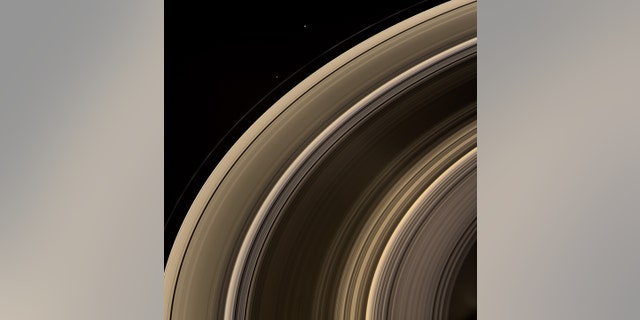
From on high, the Cassini spacecraft spies a group of three ring moons in their travels around Saturn. (Photo by: Photo12/Universal Images Group via Getty Images)
“The phenomenon has never before been seen in the solar system. It’s an unexpected interaction between Saturn and its rings that potentially could provide a tool for predicting if planets around other stars have glorious Saturn-like ring systems, too,” NASA said.
NEIL DEGRASSE TYSON SAYS JAMES WEBB SPACE TELESCOPE IS WINDOW TO UNIVERSE ‘NEVER BEFORE ACHIEVED’
The University of Reading said some experts have suggested the rings of Saturn could only be 100 million years old.
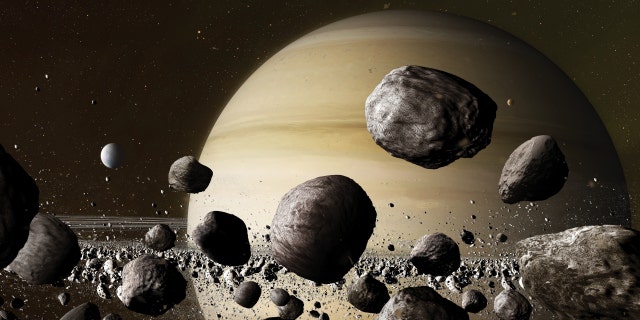
Illustration of Saturn, viewed from within the planets rings, created on March 16, 2016. (Illustration by Tobias Roetsch/Future Publishing via Getty Images)
Analysis of gravity science data from NASA’s Cassini spacecraft in 2019 indicated that the rings formed between 10 million and 100 million years ago, during the age of the dinosaurs.
The rings are thought to be pieces of comets, asteroids or shattered moons that broke up before they reached the sixth planet from the sun. They are made of billions of small chunks of ice and rock coated with other materials.
CLICK HERE TO GET THE FOX NEWS APP
Each ring orbits at a different speed around the gas giant.
Saturn is a massive ball made mostly of hydrogen and helium, and is the second-largest planet in our solar system. Saturn also has dozens of moons.

